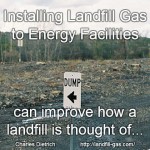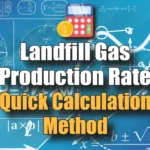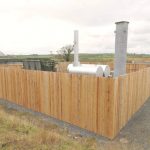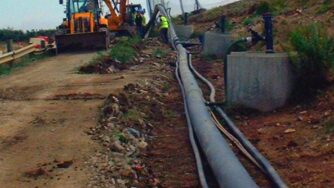Many people have decided to assess landfill gas production. Ever since the first gas was seen bubbling from landfills in the 1970s, engineers have predicted landfill gas production, and recently a number of calculation models have been devised to predict the total volume and energy value/ climate change effect of landfill gas over the whole period of landfill gas production by the landfill. There are many advantages to doing this, if the circumstances are right for it. There is most certainly more than one way of going about doing it, and you should know about them if you intend to do such calculations yourself.
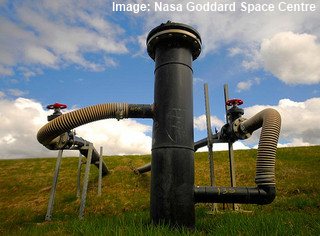 There isn't really a “one size fits all” solution. There are various methods to get it done which will work. Whatever method you discover can have good points and bad, and people who prefer it and other people who don't.
There isn't really a “one size fits all” solution. There are various methods to get it done which will work. Whatever method you discover can have good points and bad, and people who prefer it and other people who don't.
Because of this it is best to first survey, analyze, and compare, the different methods available. Understanding the merits and drawbacks associated with every approach will help you choose wisely amongst them
To get you started off, what follows is a quick survey of the frequently employed approaches to assess predicted landfill gas production which are:
1. The so called “simple zero order” spreadsheet model. Is based on the assumption that each tonne of Municipal Solid Wastes (MSW) produces approximately 5 to 10 cubic metres of landfill gas for the first 10 years after deposition and approximately 150 cubic metres of landfill gas in total over its lifetime. This is a fancy name for a rule of thumb guide which has been used for many years for initial landfill gas quantity estimation.
2. GasSim2.5 which is the latest version of a resource and risk assessment tool for landfill gas adopted by the UK Agency and developed using UK Government funding by Golders consultants. The latest version, GasSim2.5, was released in early 2012. In GasSim2, the estimated prediction of the rate of generation of landfill gas is calculated from the mass of waste deposited and the composition of each waste stream. Site waste input data are used for historical waste inputs, and the waste composition as far as it affects gas yield is added in the model to calculate the quantity of carbon that is available for slow, moderate and fast degradation, and from that the quantity and rate of LFG production is predicted.
3. LandGEM is an Microsoft Excel based tool for estimating emission rates from municipal solid waste (MSW) landfills. The waste composition is made use of to determine the volume of carbon that is available for slow moving, moderate and rapid degradation and also the quantity from fast LFG production. Waste degradation is modelled in a comparable fashion for both of the first order models compared here. Waste degradation, and for this reason gas generation rate, follows first order decay kinetics. The degradation rates for sluggish, moderate and quickly degrading wastes are dependent on the waste dampness conditions. Default values, based on actual experience at UK land fills, are provided for ‘dry', ‘ordinary', ‘wet' and ‘saturated' conditions within sites, nevertheless the degradation rates can easily additionally be re-adjusted manually.
Needless to say there are other methods too, but these shown above are generally used and seem to be effective. All of them will work, and work nicely when applied correctly, although the “simple zero order” method is only good for very rough initial “ball-park” accuracy estimation. Each of these methods has numerous advocates and good examples. Simply choose whichever one you want and begin to assess landfill gas production rates!
Trace Gases in Landfill Gas from a Typical United Kingdom Municipal Solid Waste Landfill
Trace gases in UK landfill gas include a mix of VOCs, hydrogen sulfide, nitrogen, and others. These gases arise from the breakdown of organic waste and microbial actions. Over 500 trace components have been identified, including hydrogen sulfide, vinyl chloride, carbon disulfide, and BTEX compounds…
How the Landfill Gas to Energy Process Works
For those that ever wondered how the landfill gas to energy process (also known as LFGTE) works? This article takes you through how waste management companies convert naturally occurring landfill gas into clean renewable energy at its LFGTE facilities. To give you an idea of how much the landfill gas to energy process is contributing […]
Landfill Gas Production Rate Quick Calculation Method
The Ready Reckoner or Rule of Thumb Estimate of Landfill Gas Production Rate/Yield! Quickly gain a VERY rough estimate of a landfill's Landfill Gas Production Rate! For the first considerations of a potential landfill gas production rate, before carrying out a full yield evaluation, for landfill gas utilization projects, you can use the following rules (but […]
Why Landfill Gas Recovery is Important
The Importance of Landfill Gas Recovery in Reducing Greenhouse Gas Emissions and the Proportion of Active Landfill Gas Recovery Achievable Over the Life of a Modern Sanitary Landfill Due to its high content of methane, landfill gas recovery can be regarded on the one hand as a useful alternative source of energy, when collected and […]



